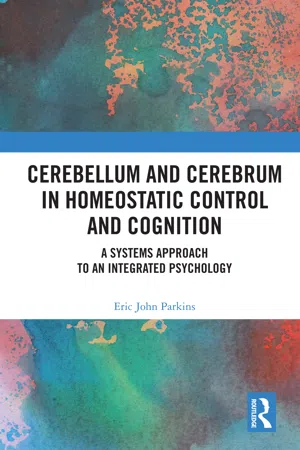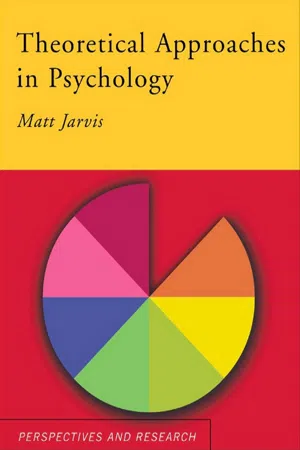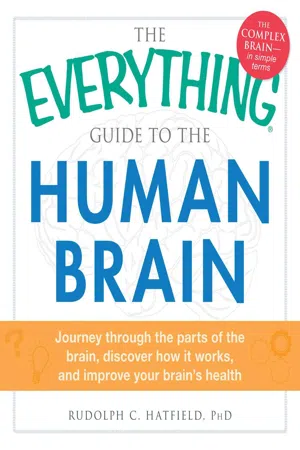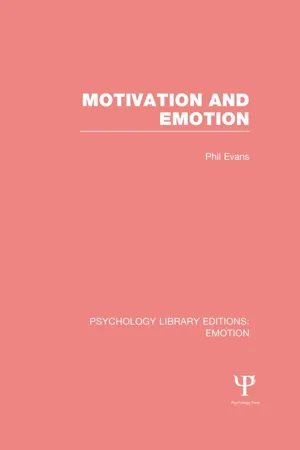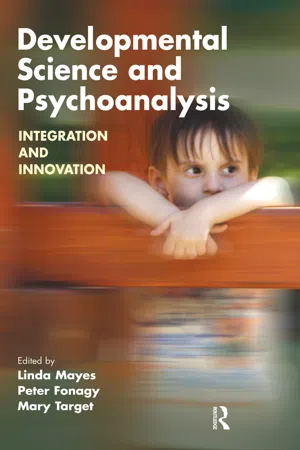Brain During Sleep
During sleep, the brain cycles through different stages, including non-rapid eye movement (NREM) and rapid eye movement (REM) sleep. These stages are characterized by distinct patterns of brain activity and serve various functions, such as memory consolidation, emotional processing, and restoration of cognitive function. The brain also undergoes changes in neurotransmitter levels and neural network activity during sleep.
7 Key excerpts on "Brain During Sleep"
- eBook - ePub
Cerebellum and Cerebrum in Homeostatic Control and Cognition
A Systems Approach to an Integrated Psychology
- Eric Parkins(Author)
- 2021(Publication Date)
- Routledge(Publisher)
...Chapter 9 Dreaming brain and dreaming mind DOI: 10.4324/9781003024606-10 Dreaming brain Stages of sleep, NREM, and REM dreaming Mammalian sleep is made up of non–rapid eye movement (NREM) sleep and rapid eye movement (REM) sleep (Walker, 2009). Mental activity occurs during both NREM and REM periods, but the ‘dreams’ within these distinct periods differ significantly in their quantitative and qualitative aspects, and they are considered to be produced by different physiological mechanisms (Takeuchi et al., 2001). NREM sleep dreams are usually reported as being less complex, less vivid, and more thought-like or awake-like than REM sleep dreams (Oudiette et al., 2009). NREM sleep mentation appears to follow the rules of secondary process thinking (Steinig et al., 2017), whilst REM sleep is characterised by primary process thinking (Hobson & Friston, 2012 ; Hobson et al., 2014 ; Steinig et al., 2017). Most researchers therefore consider REM sleep to be the physiological correlate of dream consciousness and dream mentation (Fox et al., 2013 ; Hobson, 2007a ; Hobson et al., 2014 ; Oudiette et al., 2009). Accordingly, this section on ‘Dreaming brain’ will focus on the characteristics of REM sleep dreaming. Conditions for REM sleep During REM sleep, extrinsic sensory input from the periphery of the central nervous system is actively blocked (Fox et al., 2013 ; Hobson, 2007b ; Hobson et al., 2003 ; Wamsley & Antrobus, 2007). The opportunity for cortical processing of external information is reduced to a minimum particularly during phasic REM (Wehrle et al., 2007). There is atonic depression of motor output which lasts throughout the sleep episode (Fernandez-Mendoza et al., 2009 ; Peever & Fuller, 2016 ; Stettner et al., 2013)...
- eBook - ePub
- Matt Jarvis(Author)
- 2005(Publication Date)
- Routledge(Publisher)
...The brain is at its least active and the sleeper is very difficult to wake. Once the sleeper has been in stage 4 for a time the cycle reverses and they go through stages 3, 2 and 1. The person then enters active sleep. This is also called REM sleep because it is characterised by rapid eye movements (REMs). Stages 1–4 are collectively called nREM sleep. REM sleep is when most of our dreams occur, and also when our dreams are longest, most memorable and most vivid. Natural waking occurs most commonly from REM sleep. The dreams we remember are generally those we have during the period of REM from which we wake up. People who say they don’t dream are those who tend to wake up from nREM sleep. REM sleep is interesting because EEG reveals that the brain is extremely active, showing similar patterns to the waking state. While in REM sleep the brain becomes highly active, and EEGs show similar patterns to a waking state. Interestingly, although the brain is highly active, people are harder to wake from REM sleep than quiet sleep. Now that we have looked at the basics of sleep, it is worth looking at theories of why we sleep and why we dream. Theories of sleep Restoration theories Oswald (1976) proposed that sleep has a restorative function. This means that we need a regular period of inactivity in order to somehow ‘recharge our batteries’. Certain repair and maintenance jobs on the body, and the brain in particular, can perhaps not be done while we are active. Oswald suggested that adenosine triphosphate (ATP)—the source of energy for the cells that make up our bodies—can only build up in cells during sleep. This may be especially important for the brain, which uses up 20 per cent of the body’s energy. According to Oswald’s approach sleep allows brain cells to recover after the frantic activity of a day. Sleep appears to have other restorative functions. Certain essential chemicals are only produced during deep sleep. One such is growth hormone...
- eBook - ePub
The Everything Guide to the Human Brain
Journey Through the Parts of the Brain, Discover How It Works, and Improve Your Brain's Health
- Rudolph C Hatfield(Author)
- 2013(Publication Date)
- Everything(Publisher)
...Delta waves are also predominant in stage IV sleep, thus leading to stages III and IV sometimes being called slow-wave sleep. As you fall asleep and move through the stages, your breathing rate, heart rate, and brain activity become slower than they were in the previous stage, and the percentage of slow, large amplitude waves increases. These slow brain waves indicate that neural activity is becoming highly synchronized, whereas during wakeful states, neural activity is a less synchronized response to a number of external and internal stimuli. Once at stage IV sleep, you remain there for a while and then cycle back through stages III and II, but instead of going to stage I, you enter a new stage called REM sleep (rapid eye movement sleep). Some researchers prefer to distinguish only between REM sleep and non-REM sleep (all of the other stages). REM sleep is obviously associated with rapid eye movements, but also with a loss of muscle tone in the body’s core and high-frequency, but low amplitude, EEG waves. Cerebral activity increases such that REM sleep is similar to waking states. Autonomic nervous system activity also waxes and wanes during REM sleep. There can also be occasional twitches in the extremities during REM sleep and in many males there is penile erection. REM is associated with dreaming, and for many years some texts suggested that dreaming only occurs during REM sleep; however, even early studies of dreaming and REM sleep indicated that people could remember dreams from non-REM sleep, even if this was infrequently. So while it appears that a great deal of dreaming does occur during REM sleep, it is also certain that some dreaming occurs in other stages. Brain Areas Involved in Sleep The hypothalamus is one of the main areas of the brain that appears to be involved in sleep. Very early discoveries based on clinical data indicated that people who had damage to the posterior hypothalamus and adjacent areas experienced problems with excessive sleep...
- eBook - ePub
- Phil Evans(Author)
- 2014(Publication Date)
- Psychology Press(Publisher)
...Thus REM sleep forms a much larger percentage of total sleep in the very young and gradually falls off through childhood and adolescence to reach a plateau of about 25 per cent in adulthood. Stage 4 sleep stabilizes at about 15 per cent, while stage 2 sleep occupies by far the largest period, averaging about half of all sleep. These of course are averages and individual variability exists especially among the elderly, both with respect to total sleeping time and type of sleep. BRAIN MECHANISMS CONTROLLING SLEEP Although the question of why we need to sleep is not so obviously answerable as the question of why we need to eat, it is still the case that physiological psychologists have located areas of the brain which seem to have a controlling function in sleeping behaviour, just as they have discovered areas associated with eating. Much work in the 1950s increased our knowledge of the role of the Reticular Activating System (RAS) in the determination of wakefulness and sleep (Moruzzi 1964). The RAS is a dense network of neurons lying in the subcortical structures of the brain, extending from the medulla of the lower brain-stem to the thalamus. High frequency electrical stimulation of the RAS induces both EEG and behavioural arousal in a sleeping animal. If on the other hand the brainstem higher up is sectioned then the result is a behaviourally comatose animal. This ‘waking centre’ is known after its discoverers as ‘the ascending reticular activating system of Moruzzi and Magoun’. However, it would be wrong to conclude that sleep is the mere absence of wakefulness. We have seen already that the brain in REM sleep is far from inactive, although it is then at its most impervious to the intrusion of external stimuli. In non-REM sleep it is known that the brain continues to monitor much that goes on in the external world of sound. Oswald (1966) reported that subjects often wake up in response to ‘relevant’ auditory inputs...
- eBook - ePub
- Teofilo L. Lee-Chiong(Author)
- 2011(Publication Date)
- Wiley-Blackwell(Publisher)
...3 PHYSIOLOGIC PROCESSES DURING SLEEP Leon Rosenthal Sleep Medicine Associates of Texas, Dallas, Texas INTRODUCTION Sleep is a highly organized, complex behavior characterized by a relative disengagement from the outer world and variable but specific brain activity. Under normal conditions, sleep is associated with little muscular activity, a stereotypie posture, and reduced response to environmental stimuli. Sleep is indispensable for the survival of the species. As such, it is endogenously generated, homeosta-tically regulated, and reversible. Physiologic Characteristics of Adult Human Sleep Endogenously generated Regulated by homeostatic and circadian factors Modulated by environmental factors Sleep rebound follows sleep loss Functional impairment produced by sleep loss/ deprivation CIRCADIAN AND HOMEOSTATIC DETERMINANTS OF SLEEP Sleep, as other physiological variables, is regulated by the circadian timing system. The suprachiasmatic nucleus in the hypothalamus serves as the central neural pacemaker of the circadian timing system. The dominant synchronizing input to the human circadian pacemaker is environmental light. The retino-hypothalamic tract links the retina to the suprachiasmatic nucleus, conveying photic information that enables synchronization to the light-dark cycle. Humans are usually synchronized to the 24-h day with most adult humans sleeping at night. It is the temporal interplay of the circadian pacemaker and the sleep homeostatic drive that determine alertness, neurobehavioral performance, and sleep. The propensity to fall asleep follows a biphasic pattern during the 24-h day. Two peaks of sleepiness have been characterized, one during nocturnal hours (2-6 am) and another during daytime hours (2-4 pm). The sleepiness rhythm parallels the circadian variation in body temperature, with shortened sleep latencies occurring in conjunction with temperature reduction...
- eBook - ePub
Developmental Science and Psychoanalysis
Integration and Innovation
- Peter Fonagy, Linda Mayes, Mary Target, Peter Fonagy, Linda Mayes, Mary Target(Authors)
- 2018(Publication Date)
- Routledge(Publisher)
...The functioning of the motivational systems of the brain is normally channelled towards goal-directed action, but access to the motor systems is blocked during sleep. The purposive action that would be the normal outcome of motivated interest is thereby rendered impossible during sleep. As a result (and quite possibly in order to protect sleep), the process of activation assumes a regressive course. This appears to involve a two-stage process. First, the higher parts of the perceptual systems (which serve memory and abstract thinking) are activated; then the lower parts (which serve concrete imagery) are activated. As a result of this regressive process, the dreamer does not actually engage in motivated activity during sleep but, rather, imagines himself to be doing so. Due to inactivation during sleep of the reflective systems in the frontal part of the limbic brain, the imagined scene is uncritically accepted, and the dreamer mistakes it for a real perception. There is a great deal about the dreaming brain that we still do not understand. It is also evident that we have not yet discovered the neurological correlates of some crucial components of the “dream-work” as Freud understood it. The function of “censorship” is the most glaring example of this kind. However, we are beginning to understand something about the neurological correlates of that function, and we know at least that the structures that are most likely to be implicated (Solms, 1998) are indeed active during dreaming sleep (Braun et al., 1997, 1998). Hopefully it is apparent to the reader from this brief overview that the picture of the dreaming brain that has begun to emerge from the most recent neuroscientific researches is broadly compatible with the psychological theory that Freud advanced...
- eBook - ePub
- Samy Teicher, Michael Gunter, Samy Teicher, Michael Gunter(Authors)
- 2018(Publication Date)
- Routledge(Publisher)
...CHAPTER SEVEN Dreams and narratives in the developmental process: Dreaming as perceived in developmental psychology and neurobiology Kai von Klitzing T here is surprisingly little research on the significance of dreaming in the fields of developmental psychology and neurobiology. There are a number of reasons for this in terms of method. Dreaming is a profoundly subjective phenomenon and as such offers considerable barriers to established empirical research with its possible over-insistence on objectivity. In the study of dreaming, observable data has to be derived from the retrospective account of the subject, the dreamer. There is no way of checking the truth of the verbal descriptions of dreams: indeed the accounts of dreams are no more than indirect witnesses of the dream itself. The discovery by Aserinsky and Kleitman (1953) of rapid eye movement (REM) sleep as a possible neuronal correlate of dreaming has therefore provided new input for research in developmental neuroscience. Hobson (2009) puts forward the hypothesis that REM sleep is “a protoconscious state providing, as it were, a virtual reality model of the world that is of functional use to the development and maintenance of waking consciousness” (p. 803). That REM sleep is not the sole precondition for dreaming is apparent from the fact that REM sleep is already prevalent early in development, that is, during prenatal life and particularly in infancy. By contrast, lucid dreaming does not occur in connection with REM sleep until the development of the brain has progressed far enough for the narrative organisation of subjective experience to be possible. In general, it is assumed that dreams resembling those of adults begin to occur between the ages of five and eight. Hobson (2009) assumes that REM sleep plays an important role in the development of the brain, even before dream consciousness appears. The researchers in Hobson’s research group are ambivalent about the subjective meaning of dreams...
